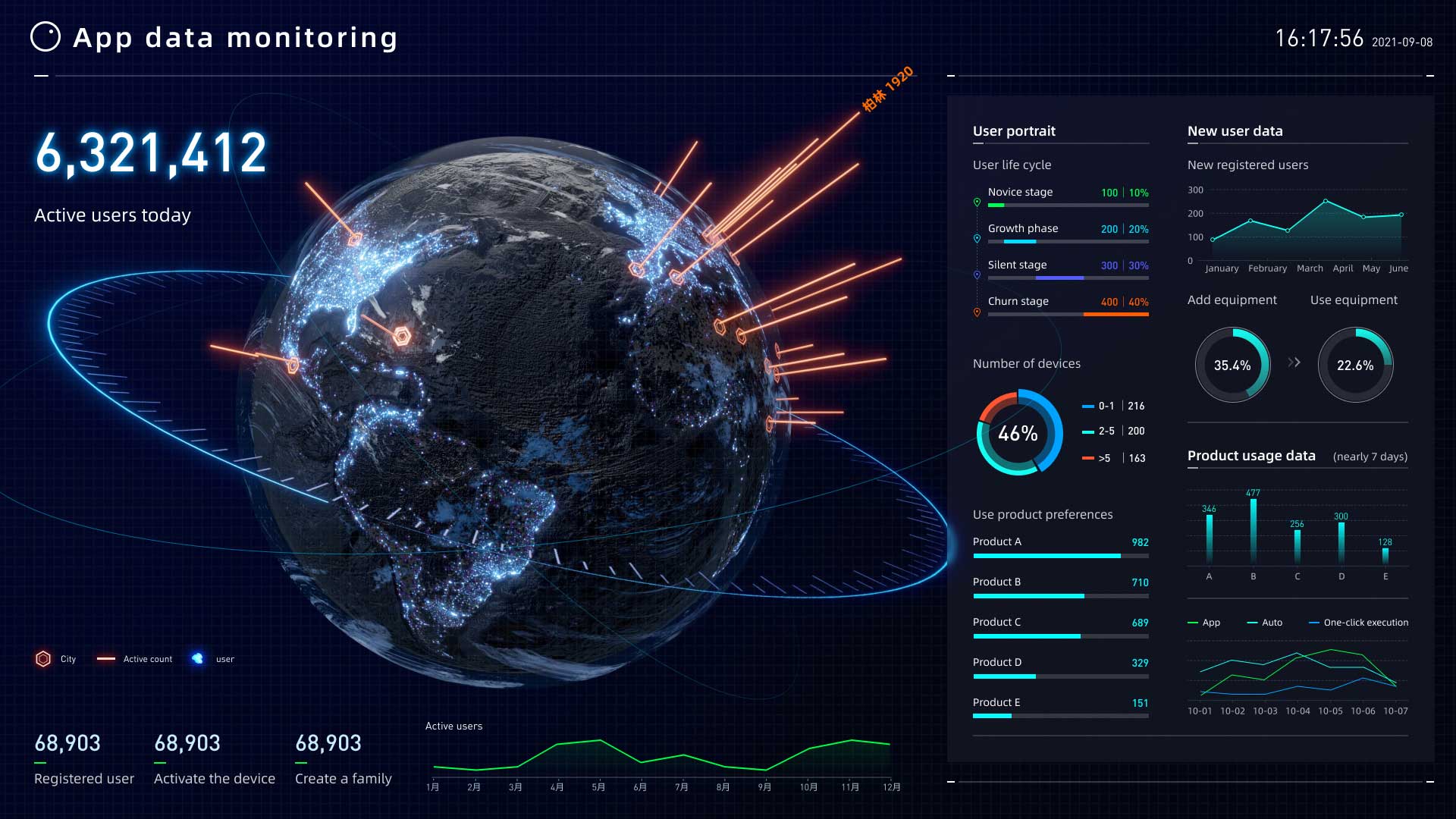Smart Home Use Cases
Last Updated on : 2024-06-19 03:02:55download
This topic describes three use cases of the smart home system, to help you quickly get to know which scenarios can be implemented through cloud integration.
Case 1: Data analytics backend/data visualization
On the Cloud Development Platform, your customers can connect all user and device data of their own app, and perform data integration, cleansing, storage, analytics, and visualization depending on business features. The IoT data applies to a wide range of use cases, such as device map, real-time energy consumption monitoring, device fault statistics, alert management, user analytics, and predictive analytics.
Tuya provides open capabilities of device activation analytics, device regional distribution, and user profiles. You can quickly build a data visualization screen on top of various capabilities. Moreover, Tuya offers open capabilities to get the original real-time and historical data of users and devices. Therefore, you can customize a data backend and a data visualization screen to suit your business features.

Case 2: Develop scenario-specific applications based on the app’s user system
Based on the app’s user system and home devices, create smart home SaaS solutions for the specified scenarios. Tuya provides a myriad of open APIs respecting user management, home management, device management, and more. Based on smart home apps, you can customize business logic and web platforms, and build custom platforms such as smart apartment, smart rental, and smart hotel.
Taking a rental platform for example, tenants get the most out of your OEM app or an app developed for end users based on the App SDK. With the app designed for end users, you can develop various functions through Tuya’s IoT cloud integration and meet your needs for the rental platform. For example, authorize tenants access to devices, calculate the water and electricity consumption, and manage the device maintenance and construction.
Case 3: Develop value-added services for end users
Through cloud integration, get the authorization of end users and access to devices, perform custom development on top of open capabilities, and thus provide value-added services for end users. For example, integrate with a third-party platform for device control, and offer mini program services.
Integration with a third-party platform ranges from a third-party voice platform to a proprietary control panel or app of an enterprise. In the OAuth 2.0 mode that requires licenses, after getting permission and authorization from end users, you can access the data of end users and devices for custom development.
In this mode, you can regard the value-added services as functions subject to separate billing, and increase the marketability of your business. On the other hand, end users can choose their desired offerings.
Is this page helpful?
YesFeedbackIs this page helpful?
YesFeedback





